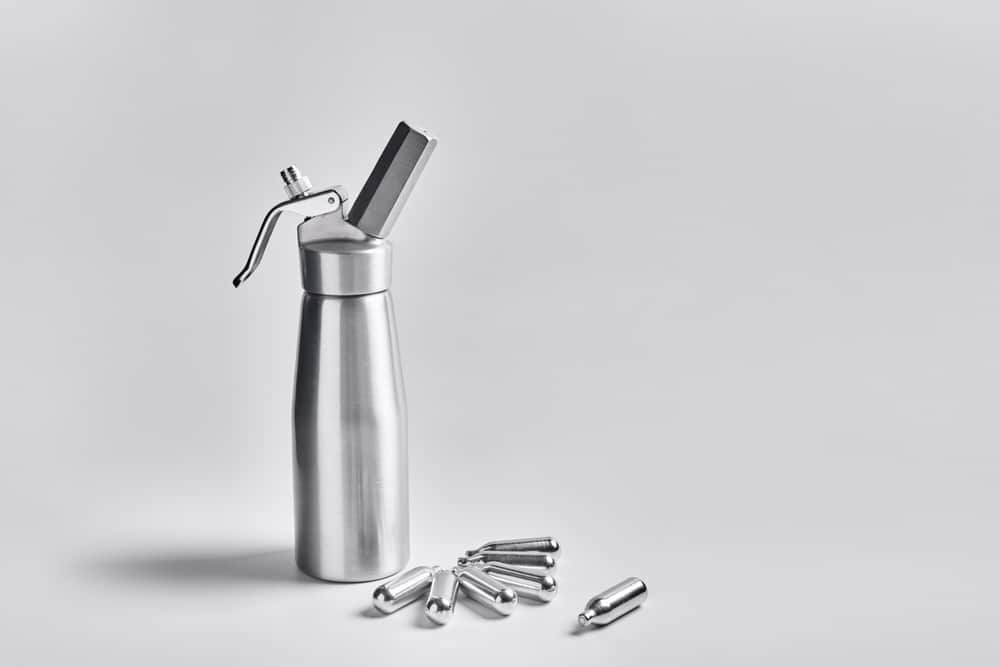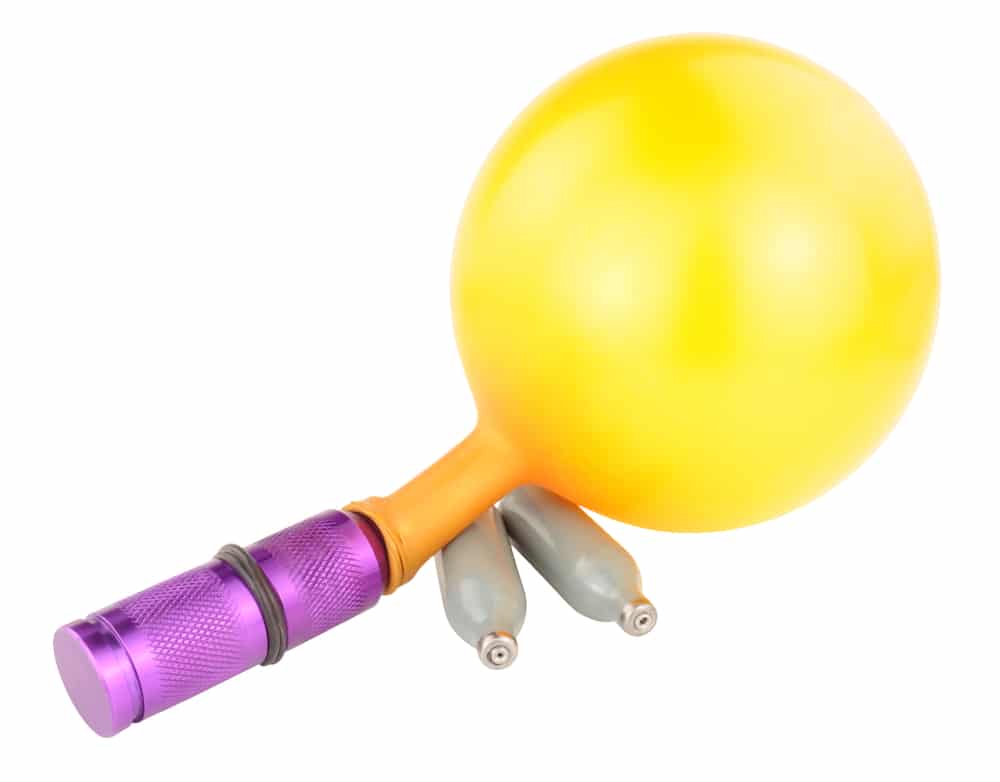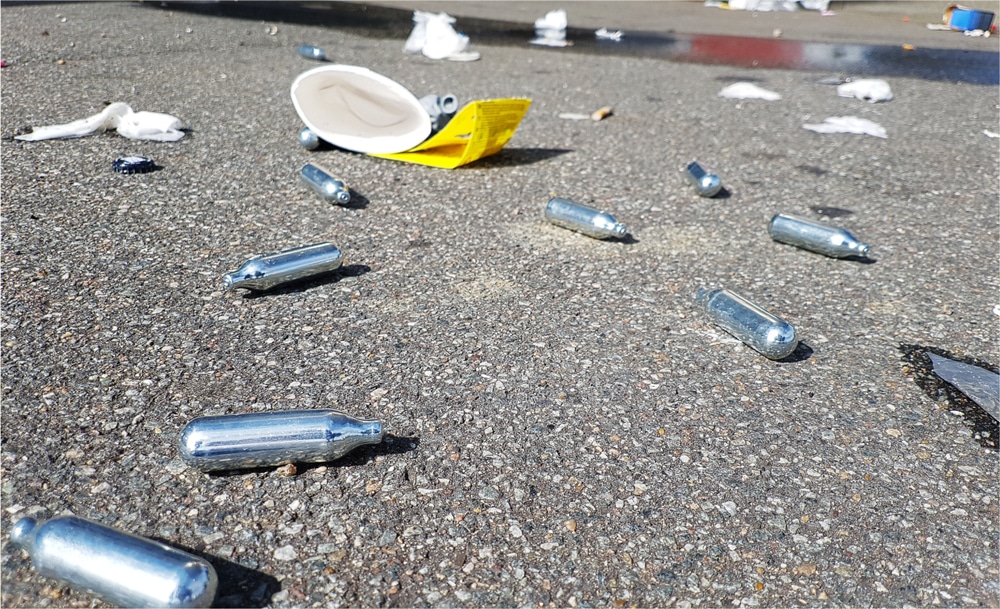
Nitrous oxide, also known as laughing gas, is a non-flammable gas used for pain relief and sedation. It was discovered in the 1700s, and since then, medical practitioners, including dentists, use it as an anesthetic to sedate their patients before conducting minor procedures. Other anesthetic gases commonly used in the United States are: isoflurane, halothane, sevoflurane, and desflurane.
Other than medicinal uses, NO2 is used in the automotive industry and food industry. In the automotive industry, some enthusiasts use nitrous oxide to improve engine performance.
With the rising number of drug abuse cases, partygoers discovered nitrous oxide and started using it to feel high or intoxicated. Today, it is one of the most common drugs in the music festival scene. You’ll likely find nitrous oxide at any concert you attend. It goes by several names, including: whippets, nangs, hippy crack, balloons, nitro, buzz bomb, N20, NO and ice cold fatties.
Nitrous oxide is a dissociative anaesthetic. Therefore, it somehow dissociates the mind from the body, giving patients or users a sense of floating. Other common side effects include intense visual hallucinations and distorted perceptions.
This article discusses the various effects of nitrous oxide gas when consumed as a recreational drug. Additionally, we will look at the results of mixing it with other drugs and the risks of inhaling nitrous oxide.
Users commonly inhale NO2 by releasing nitrous gas cartridges (whippets/bulbs) into a different object, e.g., a balloon. Some inhale it directly from the gas cylinders, like a can for whipping cream.

The effect of nitrous oxide abuse varies from person to person. Some of the factors that determine how nitrous oxide affects an individual are:
Inhaling nitrous oxide has both short-term and long-term effects.

Shortly after an individual inhales the gas from latex balloons or cartridges, they get excited, a rush of euphoria, and a sense of floating. This feeling disappears after a few minutes. Nitrous oxide abuse can cause the following short term effects:
If individuals consume excess nitrous oxide at once, they may experience high blood pressure, temporary loss of consciousness, or even get a heart attack.
Continuous use of nitrous oxide may lead to the following long term effects:

At the moment, there’s not enough research to conclude that mixing nitrous oxide with other illegal drugs increases an individual’s health risks. However, there are instances when combining nitrous with other drugs increases results in other additional symptoms.
If you mix nitrous with alcohol, you are likely to experience the following symptoms:
Other than that, mixing nitrous oxide with alcohol may increase one’s risk of accidents and death.
If you mix nitrous oxide with any stimulant, the chances are that the combination will affect your heart rate and breathing rate.
Mixing nitrous oxide with depressants like opiates or benzodiazepines may increase the chances of an overdose due to a lack of oxygen to the brain.
When you inhale nitrous oxide from the tanks or whippets, the gas is extremely cold, approximately -40 degrees Celsius. Therefore, you will likely get frostbite on your lips, nose, throat, and vocal cords.
Additionally, nitrous oxide is generally under constant pressure. Therefore, when you inhale it directly from the containers, they may cause your lung tissues to rupture.
Another risk is that the gas dispensers may explode if they are faulty. If this happens, you may end up hurt in the process.
Crackers used to dispense gas canisters may also result in cold burns on your hands.
Since nitrous oxide is a gas, there aren’t any doses associated with overdose or toxicity. However, the World Health Organization (WHO) has specific standards on the nitrous oxide amounts that dentists and other medical practitioners should use on patients, specifically for medicinal reasons. The WHO classifies the standards into two categories: chronic exposure and acute exposure.
WHO recommends that medical practitioners use 20 parts per billion (ratio between nitrous oxide and breathable air) for chronic exposures. For acute exposures, they should (ideally) use any amount below 100 parts per billion for one hour.
People who directly inhale nitrous from the containers are more likely to exceed this recommended amount. Consequently, they experience overdose and toxic side effects a few minutes after inhaling the gas.
Some signs of overdose include:
If your loved one shows any signs of overdose, call an ambulance immediately and inform the operator that the individual overdosed on nitrous oxide. If they lose consciousness, place them in the recovery position and ensure that their airway is clear. Check the breathing to ensure they are still breathing. If not, do mouth-to-mouth resuscitation.
When the paramedics arrive, inform them of the exact drugs your loved one took, especially if they mixed them with other drugs.

There is no safe level of using drugs or alcohol, and nitrous oxide is no exception. There’s always a risk that comes with any drug and alcohol abuse.
Using nitrous oxide can affect your health, finances, work, relationships, school, and other aspects of your life. If you notice that nitrous oxide has negatively affected you or your loved one, seek professional help. Contact us today to start your recovery journey. We will help you settle on a treatment center that suits you best.